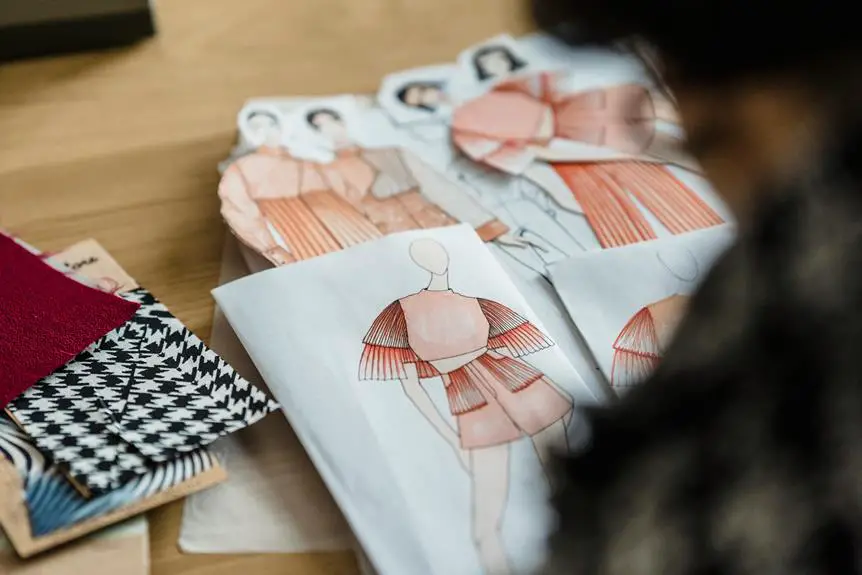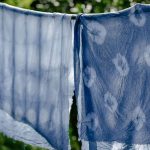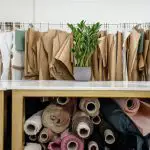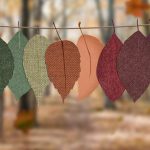When you're selecting jacquard fabric for your project, it's essential to start by identifying its purpose—whether you're upholstering furniture, making curtains, or designing garments. This decision will shape your choices regarding weight and texture, as well as the patterns and colors that resonate with your vision. You'll also need to think about the durability and care involved. Understanding these factors can make all the difference in achieving a successful outcome. But what happens when the fabric you choose doesn't meet your expectations? Let's explore how to avoid that pitfall.
Table of Contents
Understand Jacquard Fabric Types
Understanding the various jacquard fabric types is essential for making an informed choice that suits your needs. Jacquard fabrics are woven with intricate patterns, and they come in several types, each offering unique characteristics. The most common types include damask, brocade, and tapestry.
Damask features a reversible pattern and is typically lighter, making it ideal for table linens or delicate drapery.
Brocade, on the other hand, has a more pronounced texture and often incorporates metallic threads, which adds a luxurious touch—perfect for upholstery or statement pieces.
Tapestry fabrics are heavier and are often used for wall hangings or thick curtains, showcasing detailed scenes or designs.
When selecting a jacquard fabric, think about how you'll use it. For garments, you might prefer a lighter damask, while for furniture, a robust brocade could be more appropriate.
Each type not only affects the final aesthetic but also influences the durability and care requirements of your project.
Consider Weight and Texture
When choosing jacquard fabrics, considering the weight and texture is key to ensuring they meet your project's specific needs. The weight of the fabric can significantly affect the drape and overall appearance of your finished piece. For instance, heavier jacquard fabrics are often more structured and ideal for upholstery or tailored garments, while lighter options work well for flowing dresses or delicate overlays.
Texture also plays a crucial role in how your fabric interacts with light and feels against the skin. A smooth jacquard offers a polished look, perfect for formal attire, whereas a textured fabric can add depth and interest to casual projects. It's important to consider how the texture will influence the comfort and usability of your finished item.
Don't forget to feel the fabric in person if possible. This tactile experience helps you gauge how the weight and texture will perform in real-life applications.
Lastly, remember that the right combination of weight and texture not only enhances your project's aesthetic but also its functionality, so choose wisely for the best results.
Evaluate Patterns and Colors
Evaluate the patterns and colors of jacquard fabrics to ensure they align with your project's vision and enhance its overall appeal.
Start by considering the aesthetics you want to achieve. Are you aiming for a bold, modern look, or something more traditional and subtle? The patterns can range from intricate florals to geometric shapes, so choose one that complements your design goals.
Next, think about the color palette. Colors can evoke emotions and set the tone for your project. Light colors often create a fresh and airy feel, while darker shades can add depth and sophistication. If you're working with multiple colors, ensure they harmonize well together to avoid clashing.
Don't forget to consider the scale of the patterns. Large patterns can make a statement but may overwhelm smaller spaces. Conversely, tiny designs might get lost in larger areas.
Visualize how the jacquard will look in your intended setting, whether it's upholstery, curtains, or clothing. Ultimately, the right combination of pattern and color will elevate your project, making it not just functional but also visually stunning.
Assess Durability and Care
Assessing the durability and care of jacquard fabrics ensures they'll withstand the test of time while remaining easy to maintain.
When choosing jacquard, consider the fabric's composition. Cotton blends are soft and breathable but may not be as durable as polyester blends. If your project involves frequent use or exposure to wear and tear, opt for a fabric that combines cotton with synthetic fibers for enhanced durability.
Next, think about the care requirements. Some jacquards can be machine washed, while others may require hand washing or dry cleaning. Check the care label before making your selection to avoid any surprises down the line. Fabrics that can be machine washed typically offer greater convenience, especially for upholstery or home decor items.
Also, consider the weight of the fabric. Heavier jacquards tend to be more durable, making them suitable for furniture or heavy drapes. Lighter jacquards, while beautiful, may not withstand daily use as well.
Align With Project Purpose
Aligning your jacquard choice with the project's purpose ensures it meets both aesthetic and functional needs. Start by clearly defining what you're creating. Are you designing a cushion for comfort, a curtain for light control, or a statement piece for visual impact? Each purpose demands different qualities from your fabric.
Next, consider the environment where your jacquard will be used. If it's for a high-traffic area, you'll want something durable and easy to clean. If it's for a cozy living space, you might prioritize softness and warmth.
Think about the style you're aiming for. A bold pattern can serve as a focal point, while a subtle texture can enhance elegance. Choose colors that resonate with the overall theme of your project, ensuring they blend well with existing decor.
Frequently Asked Questions
What Are the Best Tools for Sewing Jacquard Fabric?
When sewing jacquard fabric, you'll want quality scissors, a reliable sewing machine with a walking foot, and fine needles to avoid snagging. Don't forget fabric weights and pins to keep everything in place while you sew.
Can Jacquard Fabric Be Used for Upholstery?
Yes, you can use jacquard fabric for upholstery. Its durability and intricate patterns make it an excellent choice for furniture. Just ensure you select a weight suitable for your specific upholstery needs.
How Do I Pre-Wash Jacquard Fabric Before Sewing?
To pre-wash jacquard fabric, you should machine wash it in cold water with a gentle cycle. Use a mild detergent, and avoid bleach. After washing, air dry or tumble dry on low to prevent shrinkage.
Is Jacquard Fabric Suitable for Outdoor Use?
Jacquard fabric's suitability for outdoor use depends on its composition. If it's made from durable, weather-resistant fibers, it can work well. However, always check the care instructions and consider potential fading from sun exposure.
What Are Common Jacquard Fabric Blends Available?
You'll often find jacquard fabrics blended with cotton, polyester, or silk. These blends enhance durability and texture, making them versatile for various applications, from upholstery to fashion. Explore different combinations to suit your needs!
- How to Care for Your Nonwoven Polypropylene Tote Bags - July 11, 2025
- Understanding SMS, SMMS, and SMMMS Nonwoven Composites - July 11, 2025
- The Ultimate Guide to Spunbond Nonwoven Fabrics - July 11, 2025





